As the world grapples with climate change and dwindling resources, there’s a growing interest in off-grid living – a lifestyle that prioritizes independence, self-sufficiency, and harmony with nature. This lifestyle is not just a dream, but a reality that’s accessible to anyone willing to embrace it. With the right planning and preparation, you can live comfortably and sustainably off the grid.
Here are some key takeaways from this article:
- Off-grid living is a viable and rewarding lifestyle choice that allows for independence and self-sustainability.
- Effective off-grid living involves careful planning, from choosing the right location to setting up renewable energy sources and water management systems.
- Embracing this lifestyle is an act of environmental stewardship, contributing to a healthier, more sustainable world.
- Living off the grid is not just about disconnecting from public utilities; it’s about fostering a deeper connection with nature, practicing sustainability, and establishing meaningful relationships within a like-minded community.
- While off-grid living presents certain challenges, the rewards of self-sufficiency, freedom, and harmony with nature make it a worthwhile journey.
Living off the Grid: A Beginner’s Guide

Embracing the Off-Grid Lifestyle: The Possibility of Freedom
The concept of living off-grid might appear daunting, even unachievable. However, the reality is that an off-grid lifestyle is not only attainable but can also offer a profound sense of freedom and tranquility. It is about embracing a life that is independent, self-reliant, and harmonious with nature. Just like Gary Collins, author and speaker, who has shared his experiences and failures of nearly a decade living off the grid, anyone can begin the journey towards a life of ultimate freedom. It’s about identifying the ideal off-grid setup that suits your budget and desires, and this is precisely where the “The Beginner’s Guide to Living Off the Grid” can be an invaluable resource.
Self-Sustainability: The Art of Independence
Living off the grid doesn’t mean abandoning modern life entirely. In fact, it can be as much about embracing technology and innovation as it is about reverting to traditional methods of self-sufficiency. It’s about learning to generate your own power, storing food and water, and creating an eco-friendly home – all part of the self-sustainable lifestyle, beautifully illustrated in Helen Richardson’s “Off Grid Living Box Set 3 In 1”. This ultimate guide to self-sustainability is a treasure trove of information for anyone looking to transition into an off-grid lifestyle. Self-sustainability means not just surviving, but thriving – using renewable energy sources, cultivating your own food, and being truly independent.
Making the Move: Practical Steps to Off-Grid Living
Living off-grid often means residing on rural property, presenting its unique set of challenges. From finding the right location to considering the costs of land, construction materials, labor, power generation, and storage systems, the transition requires careful planning and preparation. However, the transformation can be both rewarding and liberating. Whether your dream is a small backyard farm or an off-grid haven, the “Survival Skills: A Beginner’s Guide to Exploring Homesteading” can be your essential handbook to embark on this rewarding journey.
At the heart of it all, off-grid living is about embracing a lifestyle that prioritizes independence, sustainability, and harmony with nature. It’s about breaking free from the constraints of conventional living and discovering a life that is truly yours – a life that is free, fulfilling, and in tune with the rhythms of the natural world.
The Pros and Cons of Off-Grid Living
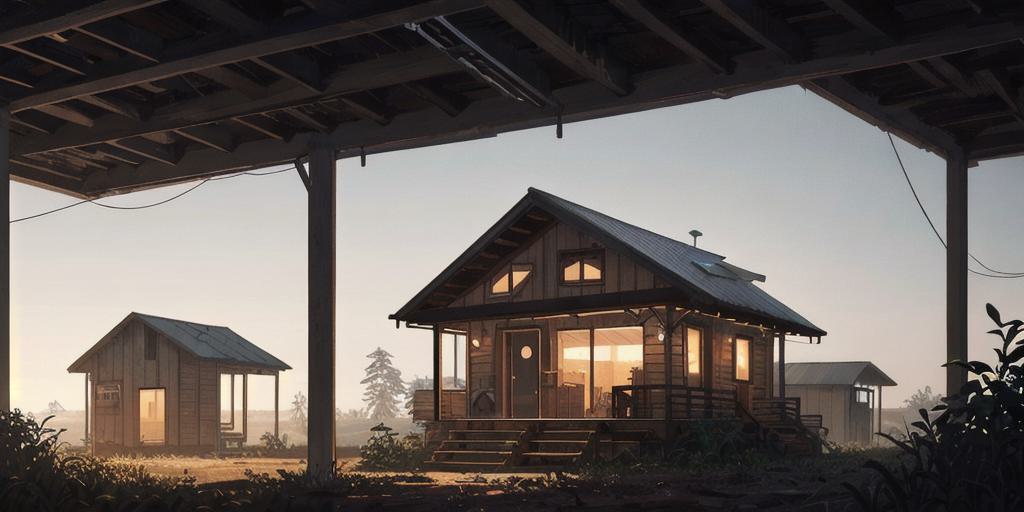
Off-Grid Living: The Intertwining of Independence and Challenges
As you leap into the embrace of off-grid living, you’re signing up for a paradoxical blend of freedom and constraints. This lifestyle, epitomizing self-reliance, offers a compelling sense of liberation. The profound elation of generating your own electricity, harvesting your own water, and growing your own food, cannot be understated. You are the master of your own universe, independent of societal infrastructures that most deem indispensable.
However, this independence is a double-edged sword. Living off-grid requires meticulous management of resources, bringing to the fore the stark reality of limitations. You are solely responsible for ensuring your power and water supply remain uninterrupted, a challenge that underlines the luxury of on-demand utilities. Access to services like healthcare may also be compromised, adding another layer of complexity to off-grid living.
The Harmony of Sustainability and Environmental Stewardship
Off-grid living is more than a lifestyle; it’s a commitment to the planet. By relying on renewable energy sources and practicing sustainable farming, you’re taking a stand against environmental degradation. You’re reducing your carbon footprint, contributing to a healthier, more sustainable world. But remember, living off-grid is not an escape from responsibility – it’s an embrace of it. As an off-grid dweller, you become a steward of the environment, a role that requires dedication, commitment, and respect for nature’s rhythms.
Off-Grid Living: An Exciting Journey of Self-Discovery
Embracing the off-grid lifestyle is to embark on a fascinating journey of self-discovery. It’s about learning new skills, honing new instincts, and unlocking a deeper understanding of yourself and the world around you. It’s about confronting your limitations, overcoming obstacles, and finding joy in simplicity. However, this journey can sometimes be a lonely road. Isolation can be a challenge, with reduced opportunities for social interaction and community engagement.
But, as with any journey worth taking, the rewards are rich and varied. The sense of accomplishment gleaned from overcoming challenges, the tranquility of living in harmony with nature, the joy of self-sufficiency – these are the hallmarks of the off-grid lifestyle. As you weigh the pros and cons of living off the grid, remember that it’s not just about the destination – it’s about the journey. A journey of freedom, sustainability, self-reliance, and above all, a journey of self-discovery.
How to Find Free Land for Off-Grid Homesteading
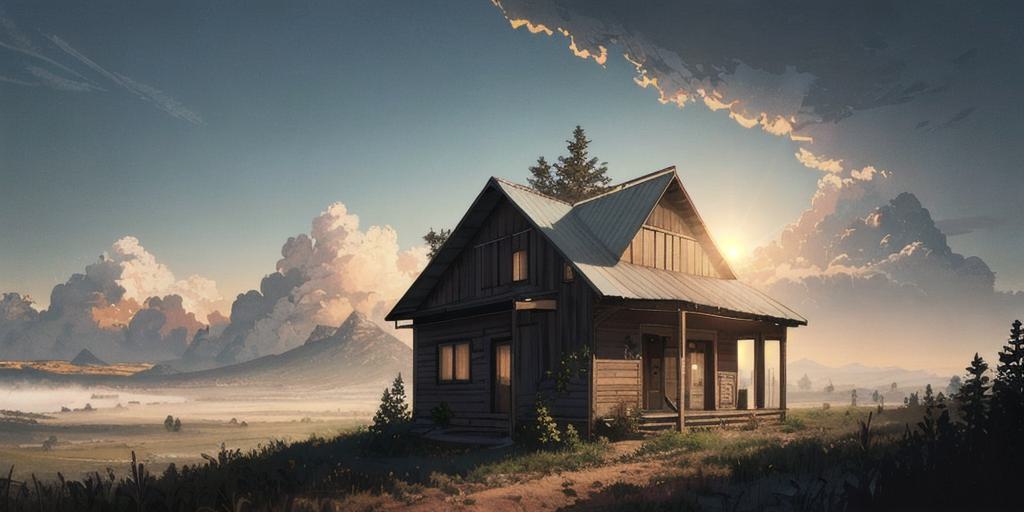
Unearthing the Hidden Gems: Free Land for Homesteading
In the sprawling universe of off-grid living, the quest for free land is akin to the search for the Holy Grail. It’s a daunting task, filled with stumbling blocks and mirages. However, with the right tools and knowledge, it is possible to discover hidden gems in the form of free land for homesteading. Here’s how.
The Power of Research: Unfolding the Map
The key to unlocking the treasure chest of free land is research, a compass that leads you on your journey. The Internet is a treasure trove of information, with platforms offering listings of available land, often for little to no cost. Look for online communities of like-minded individuals who have embarked on similar quests. Their experiences and insights can serve as a beacon, illuminating the path ahead.
When researching, pay keen attention to the laws and programs in different states and provinces. Some regions, in an effort to attract new residents and boost local economies, offer incentives including free land. These programs often come with certain conditions, such as building a home within a specified period. It’s critical to understand these stipulations ahead of time to ensure your off-grid dreams align with these legalities.
Boots on the Ground: Field Exploration
While the digital realm offers an excellent starting point, nothing replaces the value of physically exploring potential homesteading locations. If possible, visit the areas you’re considering. Assess the terrain, observe the community, and picture your off-grid life unfolding in this setting. It’s not just about finding free land; it’s about finding a place where you can thrive while living off the grid.
The Art of Negotiation: Seizing Opportunities
Free land might not always be advertised. Sometimes, it’s about spotting an opportunity and negotiating your way to a win-win situation. Abandoned or neglected properties, for instance, could be transformed into thriving homesteads with a bit of sweat and determination. Approach landowners with a compelling proposition, showing them how your off-grid lifestyle could breathe new life into their unused land.
Remember, embarking on the journey to find free land for off-grid homesteading is a marathon, not a sprint. It requires patience, persistence, and a healthy dose of creativity. But the reward – a place where you can live out your self-reliant dreams – is worth every step.
Top 5 Off-Grid Homesteading Communities
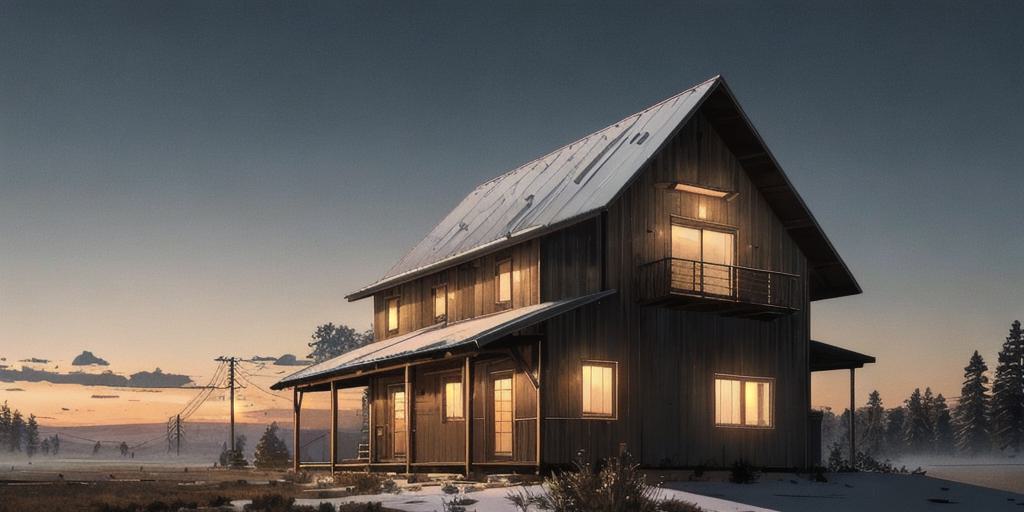
1. Dancing Rabbit Ecovillage, Missouri
If you’re seeking to blend into a community that embodies the principles of sustainability, ecological balance, and shared resources, then the Dancing Rabbit Ecovillage in Missouri is your place. This community is a testament to the possibility of harmonious coexistence with nature while leveraging technology judiciously. They utilize renewable energy, construct eco-friendly buildings, practice organic farming, and even share cars! The Dancing Rabbit Ecovillage is a beacon that showcases the path towards a sustainable future.
2. Earthships, Taos, New Mexico
New Mexico’s high-desert landscape cradles a unique community of off-grid homes known as Earthships. These are entirely self-sustainable, eco-friendly structures built from recycled materials, designed to harness solar and wind energy, collect rainwater and manage waste effectively. Each Earthship is a self-contained ecosystem, a testament to human ingenuity. The Earthships community offers workshops and seminars for those interested in adopting this sustainable lifestyle. Live out your off-grid dreams in a home that’s a living, breathing Earthship.
3. Emerald Earth, California
Nestled in the verdant folds of California’s Mendocino County, Emerald Earth is a sanctuary for those seeking an intimate connection with nature. This community is dedicated to sustainable living practices, such as organic farming, natural building, and shared economic practices. The Emerald Earth community also offers apprenticeships, internships, and workshops to help others learn and embrace sustainable living skills. Here, you are not just living off the grid; you are nurturing a deep symbiotic relationship with the earth.
4. Twin Oaks, Virginia
For those seeking an egalitarian, self-reliant lifestyle, Twin Oaks in rural Virginia is an ideal choice. This intentional community balances work, play, and communal living beautifully. Twin Oaks is largely self-sufficient, with their own organic farming projects, businesses, and shared resources. They offer a viable model of a cooperative, cash-free economy where the focus is on human connections and shared responsibility. To experience a truly alternative way of living, consider the Twin Oaks community.
5. Three Rivers Recreation Area, Oregon
Located in the high desert of Central Oregon, the Three Rivers Recreation Area is a residential community living entirely off the grid. Each home in this community is powered by solar and wind energy, and water is sourced from wells or hauled in. The area offers incredible outdoor recreation opportunities, including fishing, hiking, and wildlife viewing. If you’re a nature enthusiast seeking an off-grid lifestyle, the Three Rivers Recreation Area could be your paradise.
Living off the grid is not just about disconnecting from public utilities; it’s about fostering a deeper connection with nature, practicing sustainability, and creating meaningful relationships within a like-minded community. These communities offer a blueprint for a future where we live in harmony with the earth while still enjoying the benefits of modern technology.
The Benefits of Living in a Tiny Home Off the Grid

Embracing Financial Freedom and Sustainability
Tiny homes are a testament to the idea that less is indeed more. These compact abodes can offer an invigorating sense of financial freedom that is hard to match with a traditional house. The smaller square footage means lower utility bills and maintenance costs, allowing you to channel your resources towards what truly matters to you, such as travel, hobbies or early retirement. Kristie Wolfe’s story is an inspiring example. She built her own tiny home for $30,000 in Hawaii, where the average house price is a staggering $700,000. She now runs a successful Airbnb business and travels the world whenever she wants. (source)
Minimizing Impact, Maximizing Life
Living in a tiny home is not just about reducing expenses, it’s also about living a lifestyle that’s aligned with the planet’s needs. The environmental sustainability that tiny homes offer is unbeatable. They require fewer resources to build and operate, thus leaving a smaller carbon footprint. They also encourage a minimalist lifestyle which reduces waste. For instance, Jay Austin built his own tiny home on wheels and towed it across the US. He lived off-grid, collected rainwater, and used solar panels for electricity. His legacy lives on through his philosophy of “living deliberately”. (source)
Optimum Organization for Off-Grid Living
Living off-grid in a tiny home requires careful planning and organization. Despite having fewer things to maintain, the lack of a backup demands meticulous attention to what you do have. It is recommended to create a weekly organization plan to stay on top of essential home checkups, repairs, and cleanings. With time, this organization becomes second nature, but in the beginning, a planner can be a valuable tool. (source)
By stepping into a tiny home and embracing the off-grid lifestyle, you’re not just choosing a new place to live. You’re choosing a new way to live – one that values sustainability, financial freedom, and a deeper connection to the natural world. It’s a lifestyle that challenges the “bigger is better” mentality and proves that a smaller footprint can lead to a larger life.
The Best Off-Grid Renewable Energy Sources
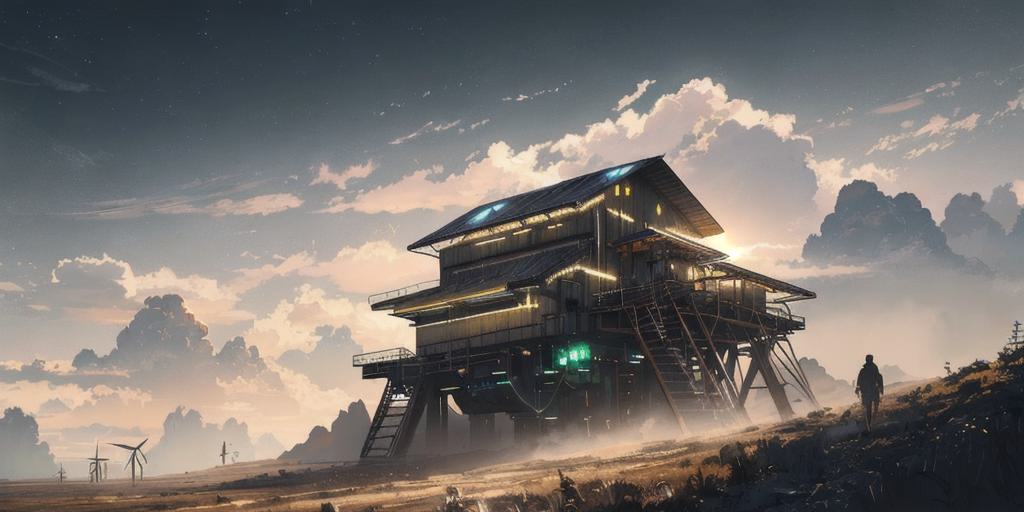
Unleashing the Power of the Sun
When we talk about renewable energy, the sun undeniably holds a prominent place. It’s a vast, untapped resource that’s available virtually everywhere – a true democratizing force in the world of energy production. As Ankur Ojha, a Solar Design Engineer in India, says, solar energy is not only accessible, but also human-friendly, making it the ultimate choice for off-grid living.
There’s a certain appeal in harnessing this celestial powerhouse to fuel your off-grid lifestyle. The energy produced is clean, renewable, and can lead to significant savings on your utility bills. Solar panels, combined with a battery storage system, can allow you to live comfortably, without the need for a conventional power grid. Plus, the rapid advances in photovoltaic technology mean that solar is becoming more efficient and affordable than ever before.
Embracing the Winds of Change
Wind energy is another viable option for those seeking to live off the grid. It’s one of the fastest-growing renewable energy sources worldwide, and for a good reason. Wind turbines can produce copious amounts of electricity, even in areas with moderate wind speeds. Moreover, once installed, they require little maintenance and provide energy at virtually no cost.
However, the effectiveness of wind energy can be highly dependent on your location. Certain areas are simply windier than others. Therefore, it’s crucial to conduct a thorough assessment of your local wind resources before deciding to invest in this form of renewable energy.
Geothermal: The Earth’s Hidden Treasure
Geothermal energy is perhaps the least visible of the renewable energy sources, but it’s a powerful ally in the quest for off-grid living. This energy, harnessed from the heat stored beneath the Earth’s surface, can provide a constant and reliable source of power. It’s immune to the fluctuations in weather conditions that can affect solar and wind energy, making it a reliable backbone for your renewable energy system.
As with wind energy, the viability of geothermal power can depend heavily on your location. Not all areas have accessible geothermal resources. However, for those that do, this form of energy can provide a stable and sustainable power source, capable of meeting a significant portion of your energy needs.
In the journey towards off-grid living, renewable energy sources are your most trusted allies. They offer the opportunity to break free from the constraints of traditional utilities while contributing to a healthier planet. But remember, the most effective system will likely involve a combination of these sources, tailored to your specific needs and the resources available in your location. As with any significant lifestyle change, careful planning, and consideration are essential. But, with the right approach, the rewards can be truly transformative. (source)
How to Grow Your Own Food Off the Grid
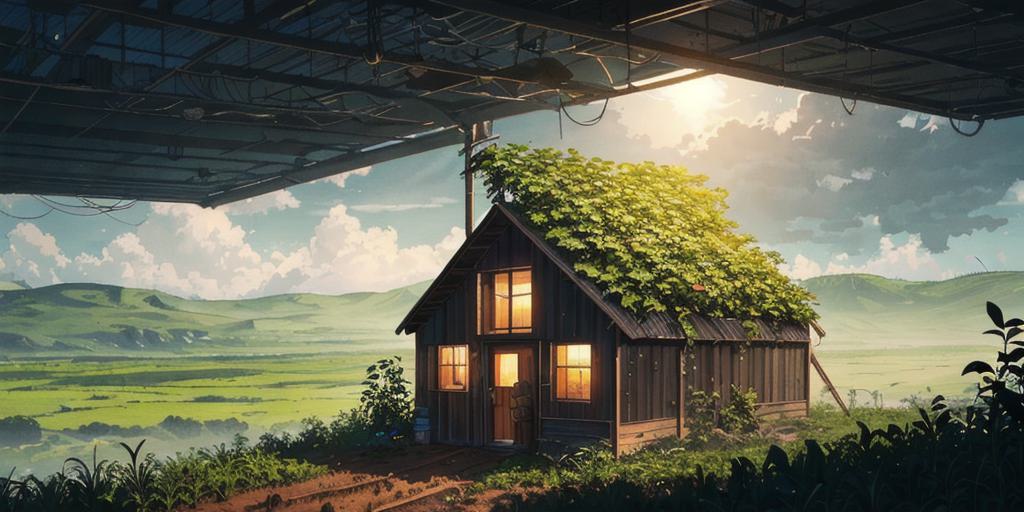
Planting the Seed: Starting Your Own Garden
Embarking on the journey of off-grid living often begins with taking control of your food source. A personal garden can serve as a reliable and satisfying means of achieving this. Whether you’re nurturing a handful of herbs on a windowsill or cultivating an acre of vegetables, the process is remarkably the same. It’s a matter of understanding the basic needs of plants and providing for them. Sunlight, soil, water, and a little bit of love—that’s the secret recipe. This comprehensive guide offers practical insights on how to grow your own fruits and veggies.
Cultivating Diversity: The Importance of a Mixed Crop
Just like in a thriving ecosystem, diversity is key in your garden. Planting a variety of crops not only provides a balance of nutrients in your diet, but also promotes a healthy garden environment. Different plants attract different insects and wildlife, some of which can be beneficial for pest control and pollination. Additionally, a diverse garden is more resilient, as it’s less likely to be devastated by a single type of pest or disease. Remember, monoculture is a modern convenience, not a natural state. The more varied your garden, the closer you are to nature’s blueprint.
From Plot to Plate: Harvesting and Preserving Your Bounty
Harvesting your crops is only the beginning. To truly feast all year round, you’ll need to master the art of food preservation. Canning, freezing, drying, pickling, and fermenting are all time-tested methods of making your harvest last. Each method has its own benefits and is suitable for different types of produce.
For instance, tomatoes are perfect for canning, while berries can be easily frozen for later use. Leafy greens and herbs can be dried and stored for seasoning. Pickling and fermenting, while a bit more complex, can add an exciting flavor profile to your meals and offer a range of health benefits.
Remember, living off the grid is about embracing a lifestyle of self-sufficiency and resilience. It’s about fostering a deep connection with the Earth and reaping the rewards of your labor. By growing your own food, you’re not only nourishing your body but also cultivating a sense of accomplishment and independence that’s unmatched in the modern, grid-bound world.
The Importance of Water Collection and Storage Off the Grid

Nature’s Tap: Harnessing the Power of Rainwater Collection
The first step on this adventure into off-grid water management is to tap into nature’s own water supply — rainwater. Rainwater collection is one of the simplest and most efficient ways to secure a constant supply of water. Picture your cabin’s rooftops transformed into a funnel, guiding each precious drop through a series of gutters and downspouts, and finally, depositing it directly into your water storage tanks. An intricate dance between nature and technology, all taking place right above your head.
And it’s not just about survival. Collecting rainwater is a grand act of environmental stewardship, a way of giving back to the planet by reducing your reliance on ground water sources. But remember, as this insightful piece advises, it’s important to consider the quality of the water you’re collecting. Not all rainwater is created equal, and pollution in the air can contaminate your precious water supply. That’s where our next step comes in.
Crystal Clear: Off-Grid Water Filtration and Purification
Water is life’s elixir, but it can also be a carrier of potentially harmful elements. Filtration and purification are non-negotiables when it comes to ensuring your water is safe to drink. The good news? Nature provides some of the best filters. Sand, rock, and even charcoal can be used to remove larger particulates from your water before it enters your storage system.
But when it comes to drinking water, you’ll need to up the ante. Invest in a robust water filtration system, like the highly recommended Berkey Water System, which can handle a range of water volumes and doesn’t rely on electricity or pressure to function. Alternatively, consider traditional methods such as boiling or chlorination. The key here is to ensure that your drinking water is free from bacteria, viruses, and heavy metals.
Remember, you are the guardian of your own health in the off-grid world. Your water management strategies should be as much about maintaining the health and vitality of you and your family as they are about survival.
Storage Wars: Choosing the Right Water Storage Solution
Once you’ve secured and purified your water, the next challenge is storage. How you store your water will depend on your unique needs and environment. Off-grid living requires a mix of practicality and ingenuity, and your water storage solutions should be no exception. From large above-ground tanks to underground cisterns, each option comes with its own set of benefits and drawbacks.
For those in colder climates, an underground tank might be the best option, offering natural insulation against freezing temperatures. However, they can be expensive and difficult to install. Above-ground tanks, on the other hand, are more affordable and easier to maintain, but they’re also more susceptible to weather extremes. A detailed exploration of underground water storage tanks can provide a deeper understanding of this option.
Ultimately, the best storage solution will be one that fits seamlessly into your off-grid lifestyle, meeting your needs without compromising your commitment to self-sufficiency and harmony with nature.
Off-grid living is a bold step towards self-reliance and a deeper connection with the earth. As you navigate this journey, remember that your relationship with water is not just about survival — it’s about respect and coexistence with the life-giving force of nature. From collection to consumption, every drop counts.
Off-Grid Living: A Sustainable Lifestyle for a Better Future
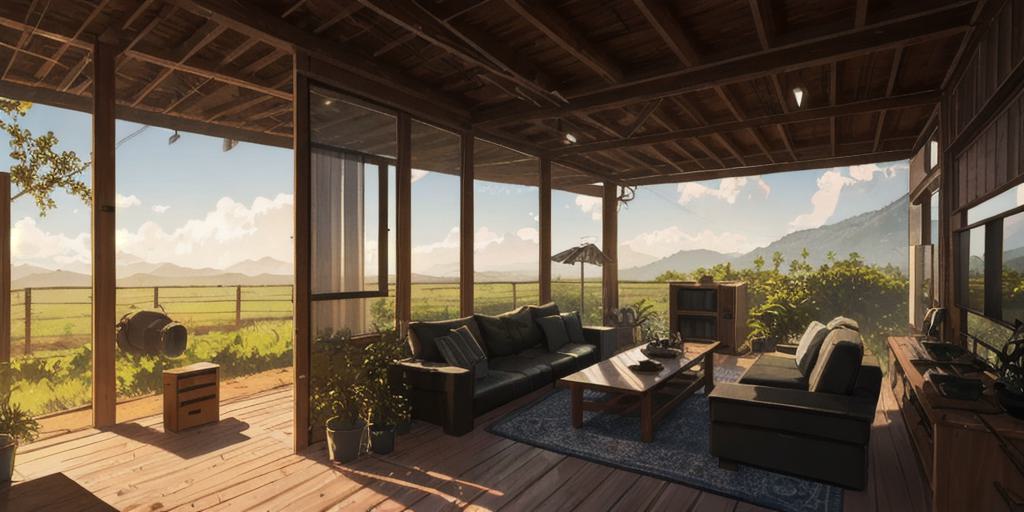
Embracing the Off-Grid: A Step Towards a Greener Tomorrow
Off-grid living is no longer a far-off dream, it’s a reality that is becoming increasingly accessible to everyone. As we step into this new era of self-reliance, we’re not just moving away from traditional ways of living; we’re also moving closer to nature and recognizing the immense value of our planet’s resources. The benefits of this lifestyle extend beyond just the individual, it’s a collective step towards a greener, more sustainable future.
Imagine a life where you tap directly into the sun’s energy to power your home, or where you utilize the rain that falls freely from the sky to meet your water needs. This isn’t just sustainable living—it’s a journey into conscious consumerism and eco-friendly choices.
Powering Your Off-Grid Dream: Harnessing Renewable Energy
Solar panels, wind turbines, and hydroelectric power systems are no longer just for the Elon Musks of the world. With technological advancements and increasing affordability, these renewable energy systems are now within reach for anyone who dreams of living off-grid. The satisfaction of generating your own power, of being in control of your energy consumption, is a feeling like no other. Plus, the environmental benefits of reducing reliance on fossil fuels are immeasurable.
But it’s not as simple as just installing a few solar panels on your roof. Going off-grid requires careful planning, preparation, and a willingness to adapt. You will need to consider your unique energy needs and find a system that suits your lifestyle, whether that’s a portable solar generator for camping trips and emergencies, a wind turbine for consistent power, or a hybrid system that combines both.
Off-grid power solutions don’t just provide electricity for your home. They can also power a variety of essential devices, from solar-powered battery chargers and backpacks to solar-powered water pumps for irrigation and water supply in remote areas. Every step you take towards renewable energy is a step towards a sustainable tomorrow.
Living Off-Grid: The Ultimate Test of Self-Sufficiency
Living off-grid is much more than just a lifestyle choice—it’s an ethos, a mindset, a commitment to sustainable living in every sense. It’s about embracing self-sufficiency, not just in terms of power and water, but also in terms of food and waste management. Start composting at home with efficient compost bins, turning kitchen scraps into nutrient-rich soil for your plants. Consider growing your own food forest, reducing reliance on commercially-grown produce and embracing a healthier, more organic diet.
Off-grid living is also about becoming a part of a community of like-minded individuals, all striving towards a common goal—a greener, more eco-conscious world. This eco-friendly guide can be your first step in this journey, introducing you to a world of sustainable products and practices.
In the end, living off-grid is not about giving up conveniences but rather about finding new, more sustainable ways to enjoy them. It’s about discovering that we can live in harmony with nature, that we can harness its power without causing harm, and that we can lead rich, fulfilling lives while leaving a lighter footprint on the planet.
The Challenges and Rewards of Living Off the Grid
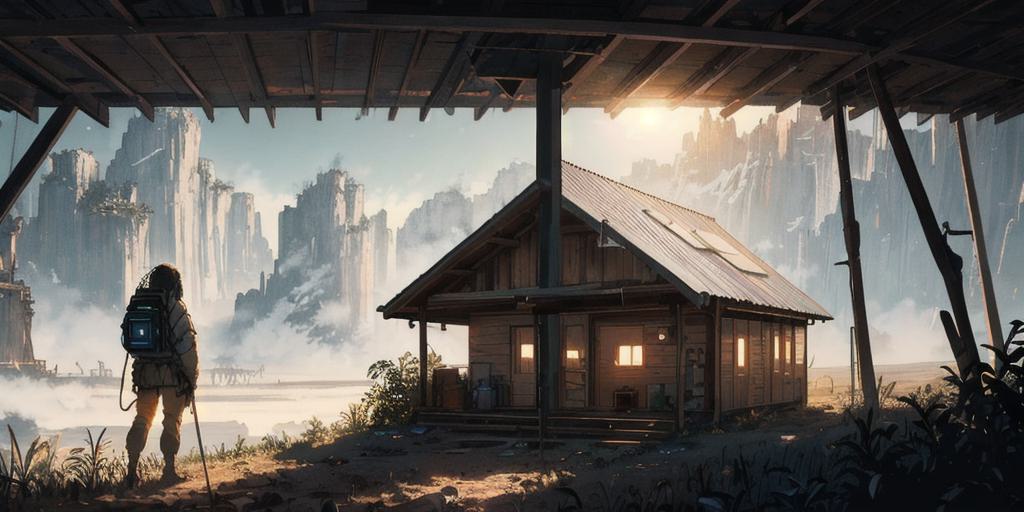
Challenging the Norm: The Off-Grid Experience
As the Off-Grid with Curtis Stone aptly puts it, going off-grid is not just a change of location; it’s a lifestyle overhaul. It’s about breaking free from the societal norms that bind us to conventional living. It’s about challenging the status quo and taking a step towards absolute self-reliance.
It’s a process that begins with the purchase of land, followed by the construction of your home, ideally designed to cater to your off-grid plans. This is followed by the installation of renewable energy systems, such as solar panels, wind turbines, or a combination of both. But remember, the weather won’t always be on your side. For times when the sun doesn’t shine or the wind doesn’t blow, having a reliable backup is crucial. Some choose to supplement their renewable energy systems with a diesel generator or a propane tank.
Living off-grid also means saying goodbye to the luxury of piped water. This challenge, however, opens up the opportunity to explore sustainable alternatives. Rainwater collection systems, private wells, or even nearby springs can be tapped into for your water needs. And with the right technology, you’ll find that the scarcity of these amenities doesn’t necessarily mean a compromise on your quality of life.
Reaping the Rewards: Sustainable Living
Off-grid living, however, is not just about the challenges. The rewards, as many off-grid inhabitants affirm, are manifold and well worth the effort. The financial benefits are evident — you save on utility bills, and with the right strategy, you can even turn your self-sufficiency into a business. But the real rewards go beyond the monetary.
Living off the grid puts you in touch with nature in an intimate way. It gives you the chance to grow your own food, which is not only healthier but also serves as an antidote to the inflation trends in the economy. It empowers you to live in a manner that is in harmony with the Earth. And in doing so, it opens up opportunities to learn new skills and take on new responsibilities.
Off-grid living is also about community. It’s about connecting with like-minded individuals who share your passion for sustainable living, who understand your struggles, and who celebrate your triumphs. Together, you form an eco-conscious community, all striving towards a common goal—a greener, more sustainable world.
Embodying Resilience: The Off-Grid Ethos
Living off the grid is an embodiment of resilience. It’s about becoming adaptable, resourceful, and self-reliant. It’s about learning to live with less and finding joy in simplicity.
Embracing this lifestyle, however, does not mean giving up on modern conveniences. On the contrary, it’s about finding sustainable ways to enjoy them. It’s about leveraging technology to harness nature’s bounty without exploiting it. It’s about living a life that’s slower, yet richer; simpler, yet fuller.
Yes, transitioning to off-grid living can be challenging. But remember, every challenge you overcome brings you one step closer to a sustainable lifestyle. And in the end, isn’t that a reward in itself?
Off-Grid Living: The Ultimate Liberation
Off-grid living is a powerful symbol of independence and environmental stewardship. It’s more than just a lifestyle choice, it is a statement of belief. This is not just about disconnecting from public utilities, but about fostering a deeper connection with nature, practicing sustainability, and establishing meaningful relationships within a like-minded community.
This lifestyle allows you to generate your own power, store food and water, and create an eco-friendly home. It is about learning new skills, honing new instincts, and unlocking a deeper understanding of yourself and the world around you. By taking control of your food source, you are not just nourishing your body but also cultivating a sense of accomplishment and independence.
The decision to live off-grid often involves a paradoxical blend of freedom and constraints. While the self-reliant lifestyle offers a compelling sense of liberation, it also requires meticulous management of resources. But, as with any journey worth taking, the rewards are rich and varied. The sense of accomplishment gleaned from overcoming challenges, the tranquility of living in harmony with nature, and the joy of self-sufficiency are some of the hallmarks of the off-grid lifestyle.
Living off-grid is a bold step towards self-reliance and a deeper connection with the earth. As you navigate this journey, remember that your relationship with water is not just about survival — it’s about respect and coexistence with the life-giving force of nature. From collection to consumption, every drop counts.
The journey towards off-grid living, powered by renewable energy sources, is a step towards a sustainable tomorrow. Every step you take towards renewable energy is a step towards a sustainable tomorrow. By growing your own food, you’re not only nourishing your body but also cultivating a sense of accomplishment and independence that’s unmatched in the modern, grid-bound world.
Off-grid living is an embodiment of resilience. It’s about becoming adaptable, resourceful, and self-reliant. It’s about learning to live with less and finding joy in simplicity. In the end, isn’t that a reward in itself?